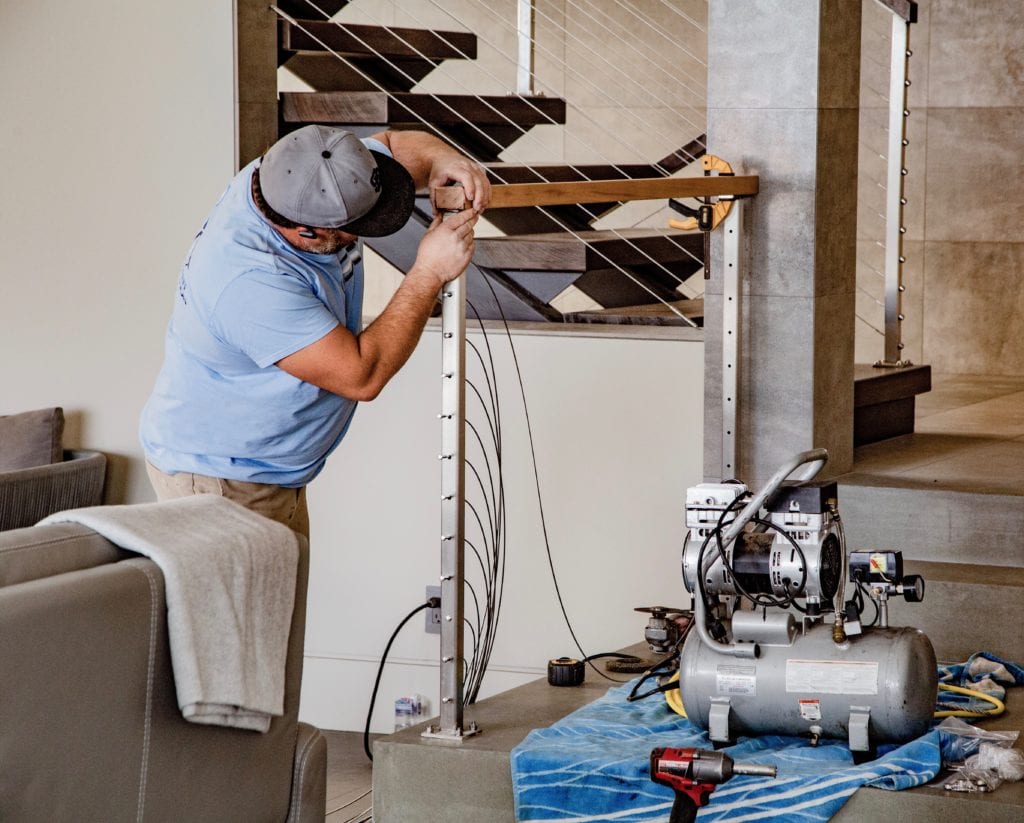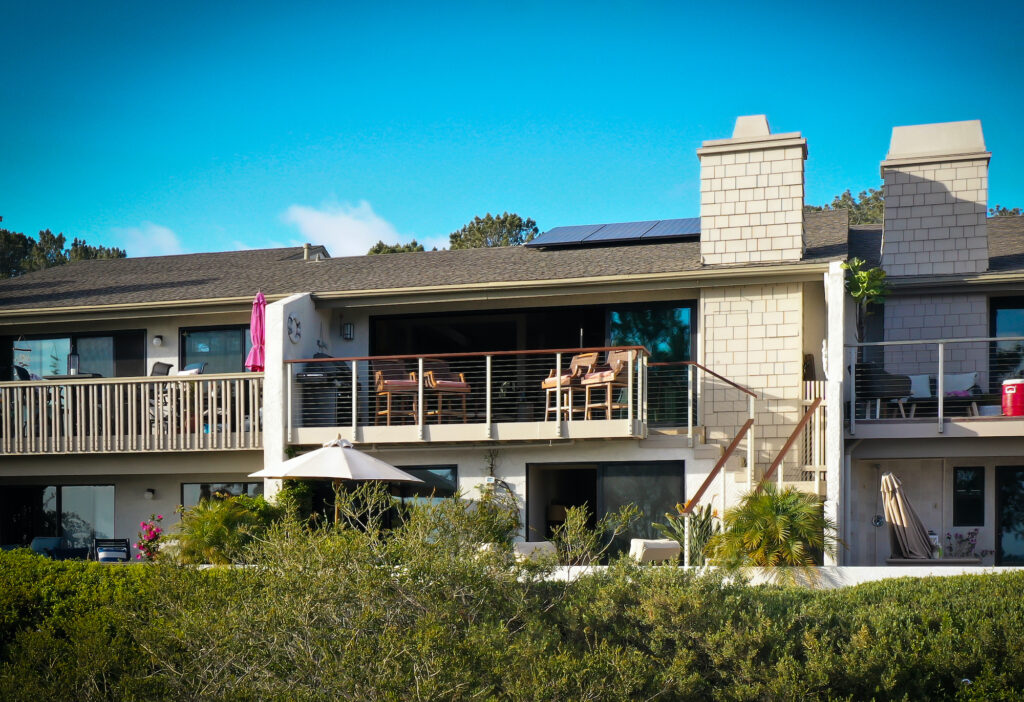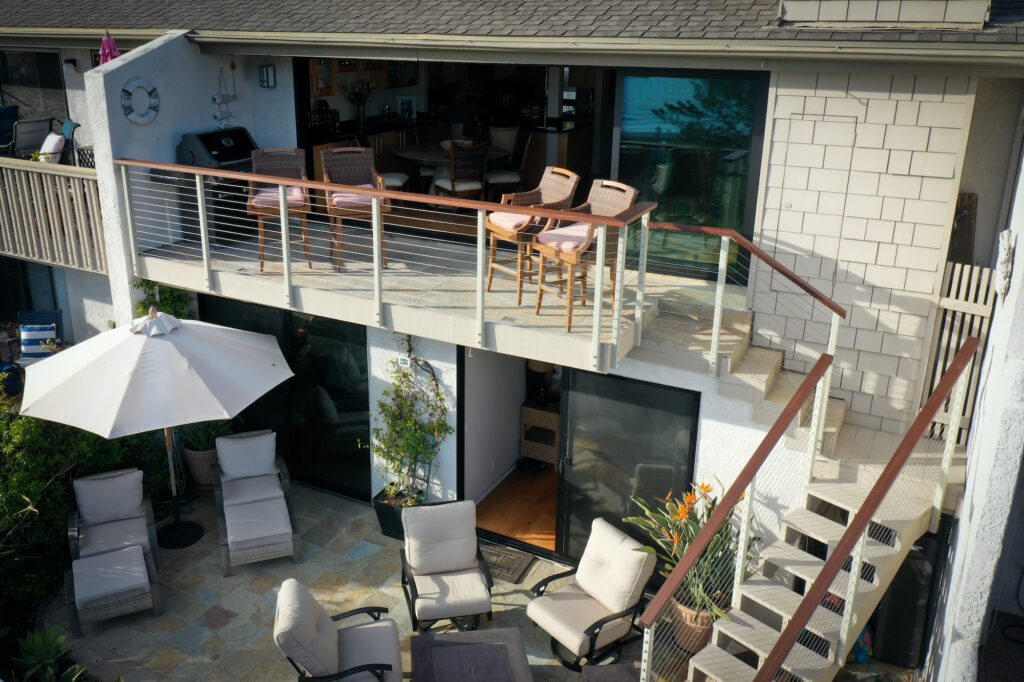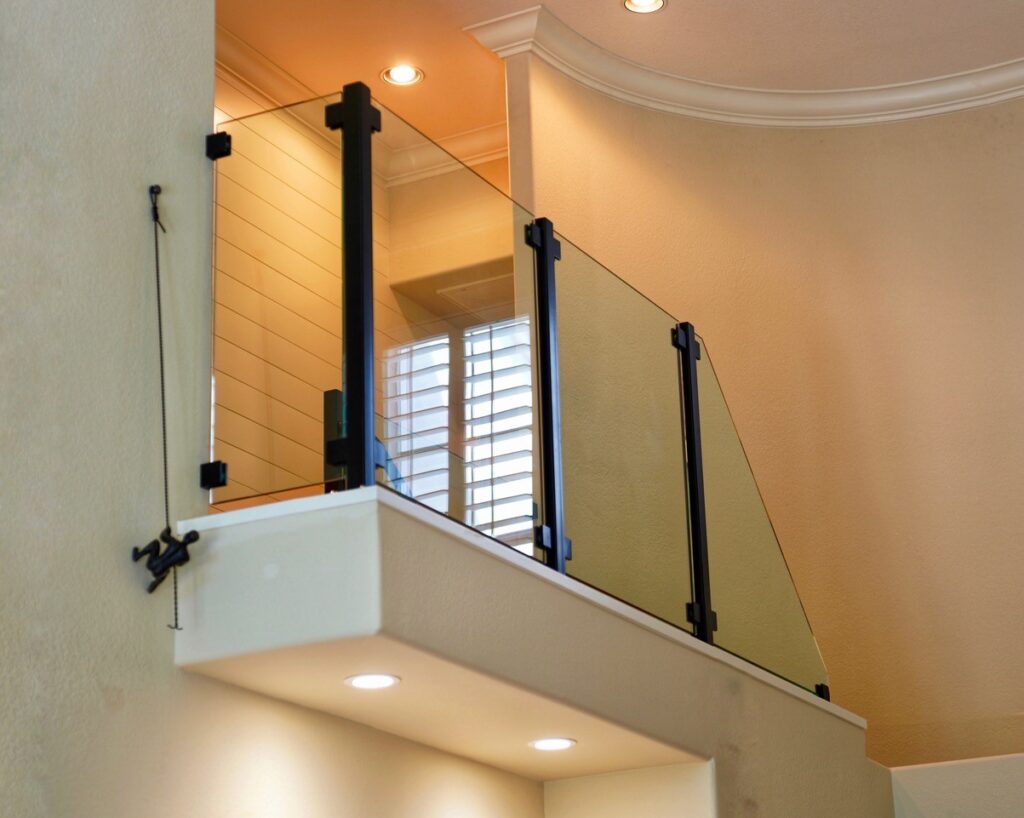Cable railings are a popular choice for modern and contemporary architectural designs, offering a sleek and unobtrusive look that complements various settings. When incorporating cable railing into a construction project, it is crucial to ensure compliance with relevant building codes and safety standards. This overview aims to highlight the key aspects of code compliance for cable railings to assist architects, builders, and homeowners in making informed decisions for their projects. As always, we are happy assist you with any questions or concerns about meeting local building codes so please contact us if you have any further inquiries.
1. Understanding Building Codes:
Building codes are regulations set forth by local, regional, or national authorities to ensure the safety, durability, and structural integrity of buildings and structures. Compliance with these codes is mandatory for any construction project, including cable railing installations. The specific codes that govern cable railing may vary depending on the location and the type of structure involved.
2. Height and Spacing Requirements:
Most building codes outline minimum height requirements for cable railing to prevent falls and ensure the safety of occupants. Typical codes stipulate a minimum railing height of 36 inches for residential applications and 42 inches for commercial or public settings. Additionally, cable spacing requirements are often specified to prevent small children from getting stuck between the cables. We utilize 3″ spacing between cable runs in order to ensure our railings will pass the 4″ sphere test California requires a minimum railing height of 42″ for residential settings. Retrofitting existing railings requires adherence to all newer codes. Constructing a railing (even no fall hazard areas) requires adherence to codes.
3. Load-Bearing Capacity:
Cable railing systems must be able to withstand lateral and tension loads to ensure their stability and safety. Codes often define the minimum load-bearing capacity for the railings to withstand both uniform and concentrated loads. This is crucial in preventing accidents and ensuring that the railing can support the weight of leaning or falling individuals.
4. Material Specifications:
Building codes may specify the type and quality of materials used in cable railing systems. Stainless steel is commonly recommended due to its durability, resistance to corrosion, and structural strength. The cables themselves must meet specific tensile strength requirements to ensure they can withstand the intended loads. We use high-strength steel cables in all of our installations to ensure our railings comply with local building codes.
5. Proper Installation:
Correct installation is vital for ensuring the effectiveness of the cable railing system. Codes may require certified professionals or licensed contractors to install cable railings to guarantee compliance with safety standards. Improper installation can compromise the stability and safety of the railing, leading to potential hazards.

In some jurisdictions, cable railing installations may require a handrail to complement the system. Handrails can provide additional support, especially for those with mobility issues, and may be mandatory based on the specific building code.
Building codes can vary significantly between different jurisdictions. It is essential to consult the local building authorities or code officials to determine the specific requirements applicable to cable railing installations in a particular area.
6. Graspable Railings:
In some jurisdictions, cable railing installations may require a handrail to complement the system. Handrails can provide additional support, especially for those with mobility issues, and may be mandatory based on the specific building code.
7. Local Variations:
Building codes can vary significantly between different jurisdictions. It is essential to consult the local building authorities or code officials to determine the specific requirements applicable to cable railing installations in a particular area.
Compliance with building codes is of utmost importance when considering cable railing for any construction project. Adhering to these codes ensures the safety, stability, and legal acceptance of the installation. At San Diego Cable Railings, we employ qualified professionals and will ensure that the cable railing system meets all necessary code requirements, providing peace of mind and a secure railing solution for your project.
In recent years full welded iron picket railings and vertical bars have been replaced by elegant modular railing systems like cable railings and glass panel systems. These modern railing systems are an ever growing trend in multifamily building complexes, condos and apartments. Modular cable railing systems are cost effective and easy to assemble, with fast lead times for tight project timelines. Pre- assembly and engineered components make them DIY friendly and readily available. Welded post connections and high grade stainless steel maximize the strength and durability of SDCR railings. You can even mix and match cable and glass on the same project or condo complex by utilizing the same post and rail system for each respective infill choice. Our company and preferred installers have worked with many homeowner's associations and property managers to provide seamless product and service packages, maintenance, repair and retrofit railing systems.


Upgrading a condominium with cable railings can be a great choice to enhance the aesthetics, increase safety, and improve the overall value of the property. However, since condominiums are typically part of a homeowner’s association (HOA), several considerations should be taken into account before proceeding with the upgrade. Here’s a guide to successfully implement cable railings as an upgrade within an HOA condominium
1. Review HOA Regulations:
Before starting any renovation project, review the HOA’s governing documents, including the CC&Rs (Covenants, Conditions, and Restrictions) and architectural guidelines. Check for any specific rules or restrictions related to railings and exterior modifications. Some HOAs may have strict guidelines on design, materials, and colors, but with our large selection of railing options, we are usually able to find a design that will meet these regulations.
2. Get Approval:
If cable railings are not already a standard feature in the condo complex, you will likely need to seek approval from the HOA board or architectural review committee before proceeding. Prepare detailed plans, including the proposed design, dimensions, and materials, and submit them for approval. We can also work with your HOA to address any concerns about safety, aesthetics, or potential impact on property values.
3. Consider Child Safety:
If children frequent the condo complex, take extra precautions to address child safety concerns. As mentioned earlier, this includes proper cable spacing, railing height, and potentially incorporating additional childproof barriers.
4. Hire Professional Installers:
At SDCR we offer professionally licensed and experienced cable railing installers. We also work with a number of Preferred Installers if you a located outside of Southern California. A skilled installer will ensure the railing is securely mounted and meets all safety requirements, while also avoiding any damage to the building’s structure.
By carefully navigating the HOA’s guidelines and involving residents in the decision-making process, you can successfully upgrade the condominium with cable railings, creating a visually appealing and safe environment for all residents to enjoy.
When designing and implementing code for glass railing, there are several considerations to take into account to ensure safety, durability, and compliance with regulations. Below is a list of code considerations for glass railing:
1. Understanding Building Codes:
Building codes are regulations set forth by local, regional, or national authorities to ensure the safety, durability, and structural integrity of buildings and structures. Compliance with these codes is mandatory for any construction project, including glass panel railing installations. The specific codes that govern glass railing may vary depending on the location and the type of structure involved.
2. Height and Spacing Requirements:
Most building codes outline minimum height requirements for glass railings to prevent falls and ensure the safety of occupants. Typical codes stipulate a minimum railing height of 36 inches for residential applications and 42 inches for commercial or public settings. Residential railing systems in California are required to be a minimum height of 42″.
3. Load-Bearing Capacity:
Determine the required load capacity for the glass railing system. This includes both uniform loads and point loads. Ensure that the design can withstand the specified loads without failure.
4. Material Specifications:
Determine the appropriate thickness and type of glass for the railing panels. Tempered or laminated glass is often used for safety reasons. The thickness should be sufficient to meet load requirements and safety standards. Full rail, base shoe, and post and clip systems each have unique safety factors. Consult a licensed design professional or speak to one of our associates for more information.
5. Proper Installation:
Correct installation is vital for ensuring the effectiveness of the glass railing system. Codes may require certified professionals or licensed contractors to install glass railings to guarantee compliance with safety standards. Improper installation can compromise the stability and safety of the railing, leading to potential hazards

6. Spacing of Balusters/Posts:
Determine the spacing between glass panels, balusters, or posts. This is crucial for both safety and aesthetics. Ensure that the spacing complies with code requirements to prevent accidents and to maintain the structural integrity of the railing.
7. Maintenance Considerations:
Design the system with ease of maintenance in mind. Consider factors such as accessibility for cleaning, replacement of components, and long-term durability.
San Diego Cable Railings provides high quality cable railing systems to contractors and DIY installers nationwide. Our products are made in house based in San Diego, CA. – built to withstand harsh conditions and coastal environments.